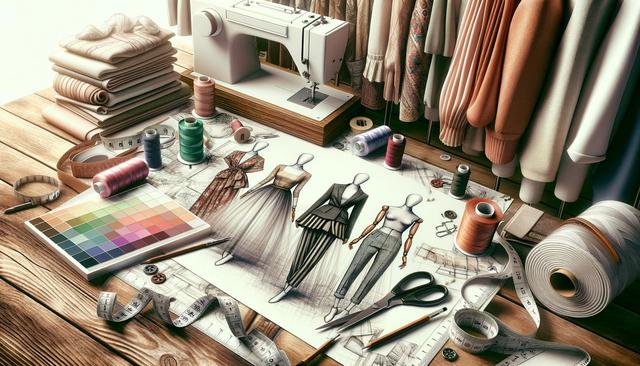Understanding the Scope of Fashion Design
Fashion design is a dynamic and evolving field that blends creativity, cultural expression, and practical skills. Enrolling in fashion design courses allows students to explore a wide range of topics, from textile knowledge and fashion illustration to history and merchandising. These courses serve as a foundation for understanding how clothes are conceptualized, created, and brought to market. They also introduce students to the broader context of fashion, including sustainability, branding, and consumer behavior.
Fashion education is not limited to one pathway. Depending on your interests, you can choose from various specializations such as apparel design, costume design, or accessories design. Many institutions offer certificate, diploma, and degree programs tailored to different levels of experience and commitment. Whether you’re a high school graduate or a professional seeking a career switch, there’s likely a program that fits your goals.
What to Expect from a Fashion Design Curriculum
The curriculum of a fashion design course is usually a balanced mix of theory and practical application. While course content can vary depending on the level and institution, most programs include core subjects such as:
- Fashion illustration and sketching
- Pattern making and garment construction
- Textile science and fabric selection
- Fashion history and cultural studies
- Computer-aided design (CAD) for fashion
These subjects equip students with a well-rounded understanding of both the artistic and technical sides of fashion. Many programs also incorporate internships or industry projects, providing students with valuable real-world experience. Exposure to hands-on training helps in building a portfolio, which is crucial for job applications or launching an independent brand.
Choosing the Right Fashion Design Course
Selecting the right course is a critical decision that depends on several factors. Aspirants should consider their career goals, budget, and preferred learning style. Some may prefer a traditional on-campus experience, while others might opt for online courses that offer flexibility. When evaluating programs, it’s essential to look at:
- The reputation and accreditation of the institution
- Faculty experience and industry connections
- Course structure and specialization options
- Access to resources like studios, labs, and software
- Alumni success stories and placement support
Researching thoroughly before enrolling ensures that the course aligns with your personal and professional aspirations. Many institutions also offer open days or trial classes, which can help you get a better feel for the learning environment.
Career Opportunities After Completing a Course
One of the most appealing aspects of pursuing fashion design is the wide range of career options available after completing a course. Graduates can work in multiple areas, including:
- Apparel and accessories design
- Fashion merchandising and retail
- Costume design for film and theater
- Fashion journalism and media
- Styling and image consulting
In addition to traditional roles, many professionals choose to become entrepreneurs, launching their own fashion labels or boutiques. With the growing importance of digital platforms, e-commerce and social media marketing have also created new opportunities for fashion designers to showcase and sell their work globally. Building a strong portfolio and networking within the industry can significantly influence your career trajectory.
Staying Updated in a Fast-Changing Industry
The fashion world is constantly evolving, and staying updated is crucial for long-term success. Design trends, sustainable practices, and technology are rapidly transforming how fashion is designed and consumed. To stay relevant, many professionals continue their education through short courses, workshops, and industry certifications even after completing formal training.
Some ways to keep up with industry developments include:
- Subscribing to fashion magazines and online platforms
- Attending fashion weeks and trade shows
- Following influential designers and brands on social media
- Joining professional associations and forums
- Pursuing advanced or specialized courses
Lifelong learning is a key part of sustaining a successful career in fashion design. The more you engage with the industry, the better positioned you are to adapt and innovate in your work.
Conclusion: Fashion Design Education as a Launchpad
Fashion design courses offer a valuable starting point for individuals looking to enter a creative and competitive field. These programs provide not only technical skills but also a deeper understanding of the fashion industry’s cultural and commercial aspects. Whether your ambition is to work for an established fashion house, launch your own brand, or explore related roles in media or merchandising, a well-chosen course can significantly enhance your prospects. Staying curious, committed, and connected to industry trends will pave the way for a fulfilling journey in fashion design.




Leave a Reply